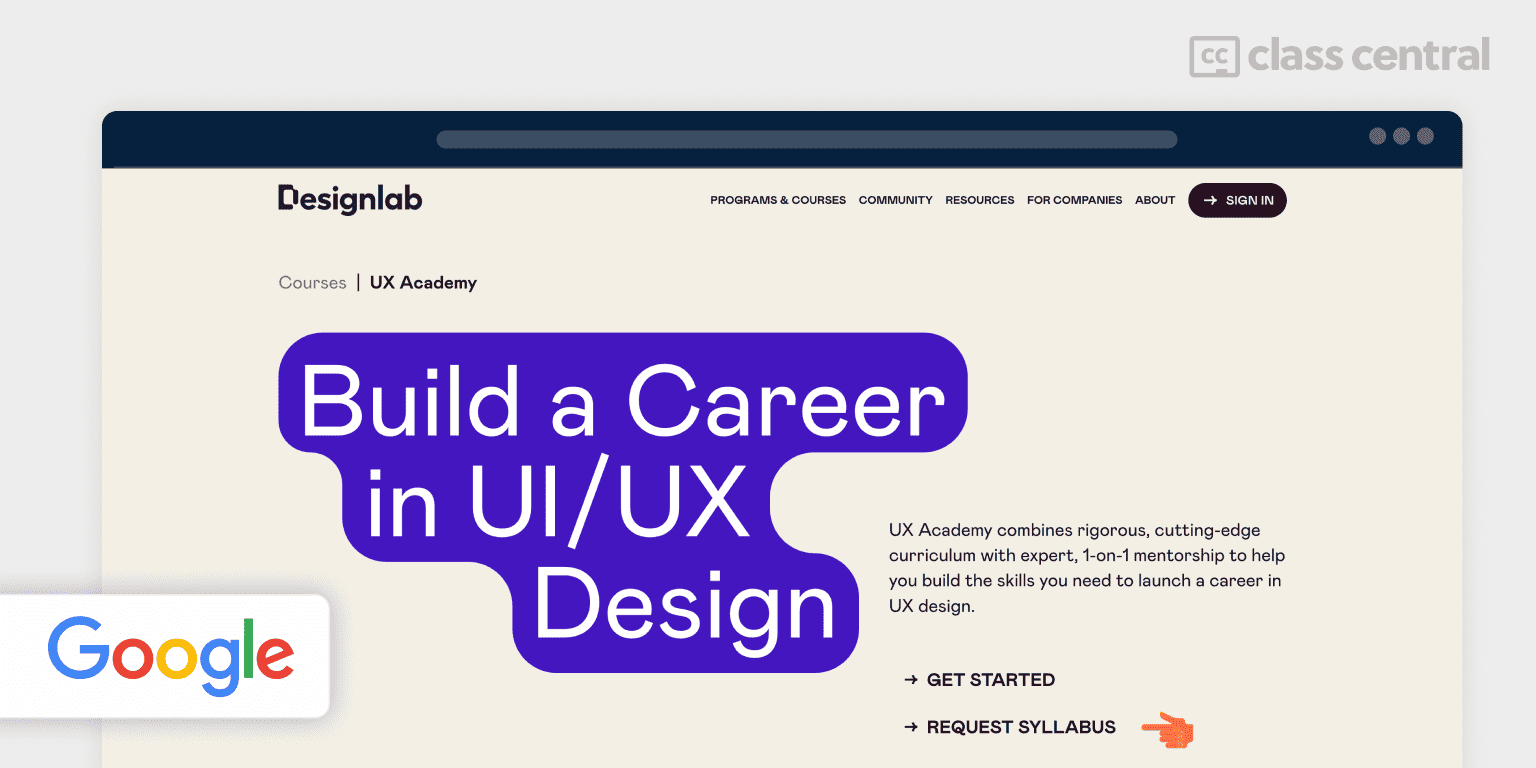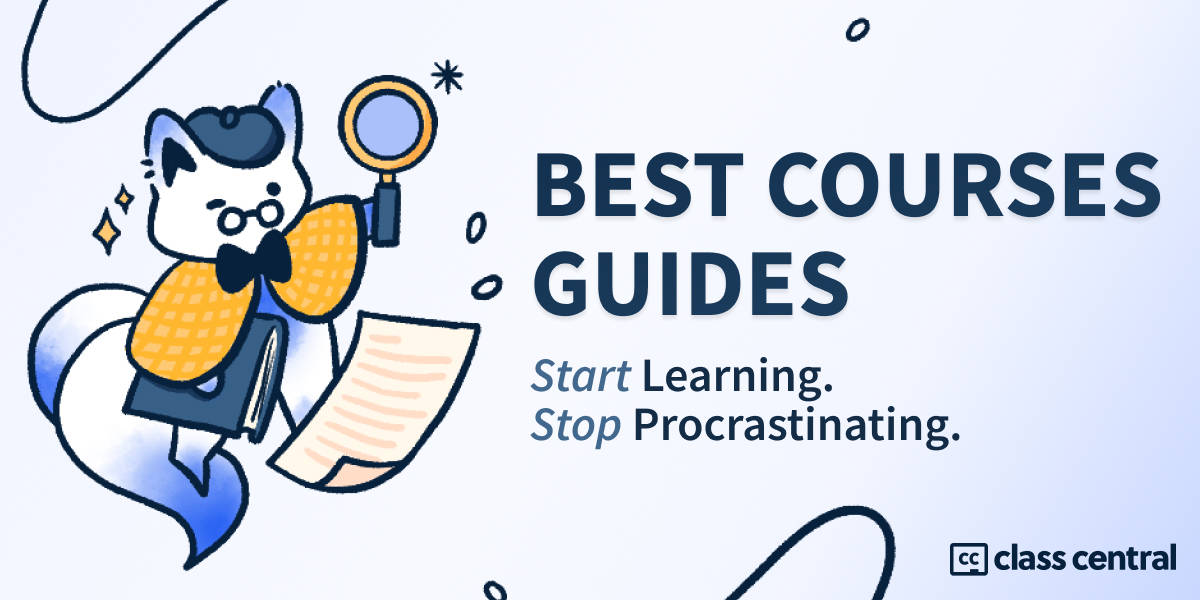12 Best User Experience (UX) Courses for 2025: Keep Users Happy
From design fundamentals to advanced prototyping: explore our curated selection of online UX courses for web, apps, and beyond.
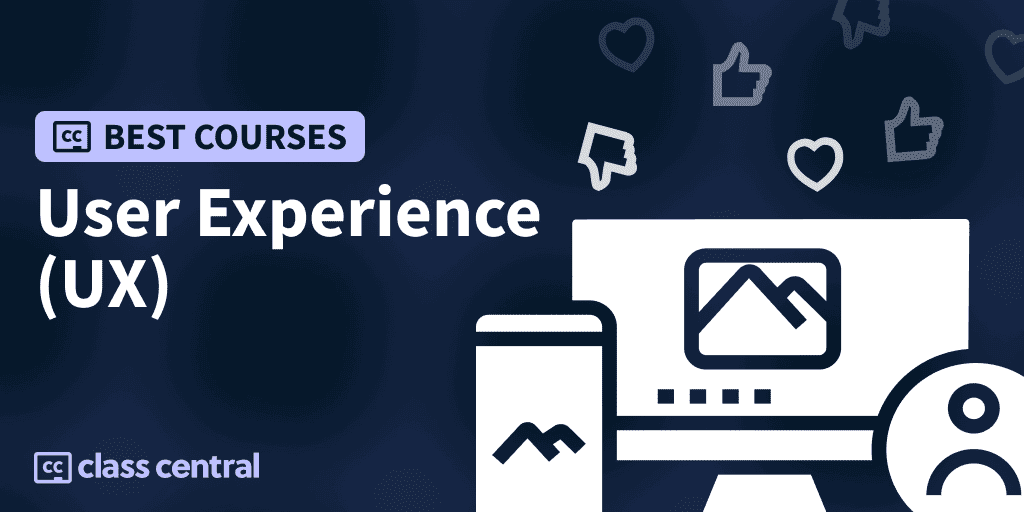
Let’s face it, if your website or app has a terrible user experience (UX), people aren’t going to stick around. In today’s age of YouTube, Instagram, and Spotify, users expect a seamless, intuitive, and enjoyable interaction with your product. If you can’t deliver that, they’ll quickly move on to something else.
That’s why it’s crucial to keep your UX game strong. That’s where this Best Courses Guide (BCG) comes in to help! I’ve sifted through over 470 UX courses and handpicked the 11 best free and paid online courses, to help you level up your UX skills.
Click on the shortcuts for more details:
- Top Picks
- What is User Experience (UX)?
- Stats
- Why You Should Trust Us
- How We Made Our Picks and Tested Them
Here are our top picks
What is User Experience (UX)?
User experience (or UX) refers to how people interact with a product. In the digital design world, it encompasses everything that affects a user’s interaction with a digital product such as its value, function, usability and overall impression.
The term “user experience” was coined by Don Norman in the 1990s and refers to all aspects of the end-user’s interaction with a company, its services, and its products. UX is about what users both think and feel, and it depends on the context in which the product is used. However, a user’s experience with a product may change over time, which means the ongoing evaluation and improvement is necessary.
User Experience (UX) vs. User Interface (UI)
User experience (UX) is different from user interface (UI). While UI focuses on the visual and interactive elements of a product, UX encompasses the overall experience a user has with a product, including how easy it is to use, how it makes the user feel, and whether it provides value to the user. UI is just one component of UX, and an effective UX design involves much more than just creating an attractive interface.
Why are User Experience Skills Important?
UX skills are essential because they help businesses create products that users find valuable and enjoyable to use. When a product is well-designed with a good user experience, it can help businesses retain customers, increase sales, and build a positive brand reputation. Additionally, as more and more business is conducted online, having strong UX skills can give designers and developers a competitive edge in the job market.
The future of UX designers is bright, as the demand for user experience skills is constantly increasing. With the world becoming more digital, companies are increasingly realizing the importance of creating positive user experiences for their products and services. The job market for UX designers is expected to grow 16% from 2022 to 2032, which is much faster than the average for all occupations.
As for salaries, the average pay for UX designers varies greatly depending on location and experience level. According to Glassdoor, the average salary for UX designers in the US is around $88,000 per year.
Stats
- Combined, these courses have accrued over 1.4M enrollments
- 9 courses are free or free-to-audit and 3 courses are paid
- The most-represented course provider is Coursera, with 7 courses
- The User Experience subject is followed by 10.1K learners on Class Central.
Best UX Design Course for Complete Beginners (Google)
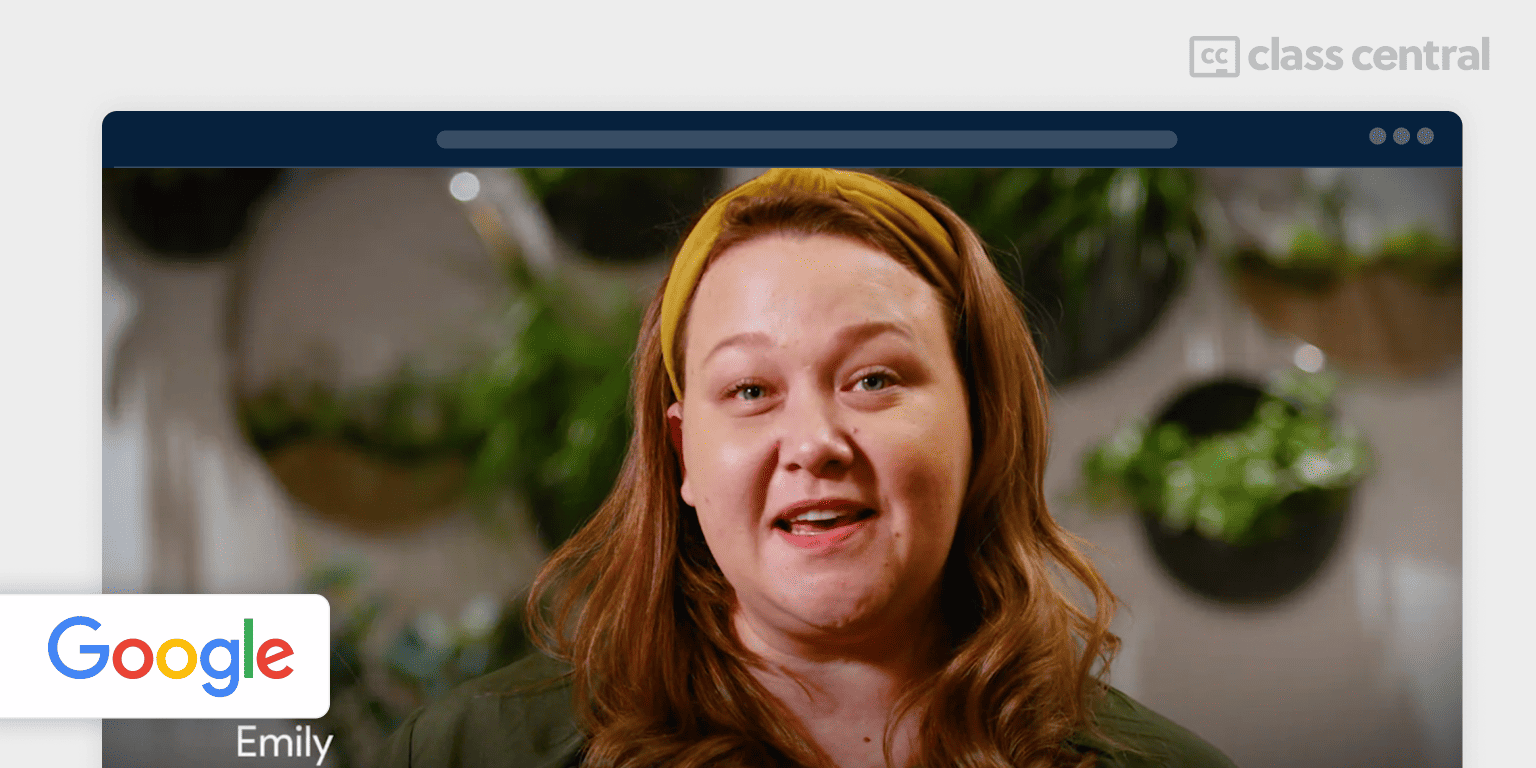
Google UX Design is a free-to-audit professional certificate offered by Google. In this specialization, you’ll learn to create designs on paper and digital design tools including Figma. By the end of this specialization, you’ll complete three end-to-end projects that will make up your professional UX portfolio, so you’ll be ready to apply for an entry-level UX design job.
This professional certificate consists of the following 7 courses:
Foundations of User Experience (UX) Design
Learn about UX fundamentals, job responsibilities of entry-level UX designers, career paths in UX, design sprints, and UX research methods while accounting for biases. This course has also been featured in The 250 Most Popular Online Courses of All Time.
Start the UX Design Process: Empathize, Define, and Ideate
Learn to empathize with users, create empathy maps, personas, user stories, and user journey maps, develop problem statements, generate ideas for solutions, conduct competitive audits, and design a mobile app, to add to your professional UX portfolio.
Build Wireframes and Low-Fidelity Prototypes
Explore how to develop a goal statement, create storyboards, wireframes and prototypes for a mobile app design, apply principles of information architecture and recognize implicit bias and deceptive patterns in design.
Conduct UX Research and Test Early Concepts
Learn to plan and conduct UX research studies, respect privacy, take notes, analyze data, develop persuasive presentation skills, and modify designs based on research insights to improve your professional portfolio mobile app.
Create High-Fidelity Designs and Prototypes in Figma
Design and build high-fidelity prototypes, apply design principles, create design systems, and collaborate with engineering teams to complete mobile app designs for your professional portfolio.
Build Dynamic User Interfaces (UI) for Websites
Plan a design for a website, create wireframes and prototypes, and test your designs to get feedback. By the end of this course, you will have a new design project to include in your professional UX portfolio. Optional lessons include creating a UX-focused resume and finding entry-level jobs.
Design a User Experience for Social Good & Prepare for Jobs
Design for social good, create wireframes and prototypes, add a new design project to your portfolio, and interview for entry-level UX design jobs or freelance work.
| Institution | |
| Provider | Coursera |
| Instructor | Various |
| Level | Beginner |
| Workload | 260 hours |
| Enrollments | 947K |
| Rating | 4.8 (72K) |
| Certificate | Paid |
Best UX Design Course with 1-on-1 Mentorship (DesignLab)
If you already have some knowledge and experience as a visual designer, UX Academy by DesignLab is a great resource. This online bootcamp will help you in building your portfolio and land your dream job with 1-on-1 video calls with experts from Figma, Meta, IBM, and more.
This course offers an immersive learning experience with practical exercises & projects to start or enhance your career in UX design. By dedicating 20 hours per week, you can expect to complete the course in 30 weeks, culminating in a final project that showcases your newly acquired skills in a portfolio with four creative capstone projects. Note that this course is not entirely self-paced, so ideally you should plan to study part-time (20 hours/week) or full-time (40 hours/week).
What learners will gain:
- Proficiency in using Figma and other essential design tools
- The ability to create responsive designs for various devices including desktop, tablet, mobile, and smartwatch
- Skills in visual design, including color theory, typography, and the use of images, icons, and elements
- Experience in form design and the creation of multi-step forms
- An optional introduction to key UX design terms, processes, and roles
- Join a vibrant online community where you can collaborate and network
- Build a unique and comprehensive portfolio to stand out in the UX design job market.
If you’re a total beginner, you can apply to the UX Academy Foundations, which also include 8 mentorship sessions.
| Provider | DesignLab |
| Mentors | Mfonobong Umondia, Poyi Chen, Jane Tran, Lucas Blondheim, Vlad Derdeicea, Peter Javorkai, Estefania Hernandez, and Chrissy Welsh |
| Mentor Sessions | 26 |
| Level | All levels |
| Workload | 490 hours (lessons + projects) |
| Exercises | 100 challenges + 4 capstone projects |
| Enrollments | 145.5K |
| Certificate | Available |
Best UX & UI Design Certificate with Live Sessions and Mentoring (Noble Desktop)
If you prefer instructor-led learning, Noble Desktop’s UX & UI Design Certificate offers real-time feedback and accountability that pre-recorded courses can’t match.
What I find interesting is that this program runs both in-person (NYC campus) and online (Zoom). Even if you’re attending online, you’ll have individual attention and can see other students in the classroom. You’ll be able to interact with instructors, receive feedback, and ask questions during sessions. Plus, you’ll get access to class recordings and workbooks – pretty helpful for catching up if you miss a class or reviewing what you learned.
Key Benefits
- Small class sizes (8-15 students)
- Free retake within one year
- Detailed class files with real-world projects
- Supplemental after-class projects and video suite.
Noble Desktop knows what they’re doing – they’ve been around for over three decades providing instruction with industry experts. So you can rest assured your mentorship will not be with someone who just finished the course. Don’t take my word for it – student reviews on Yelp and Google praise their practical approach and instructor quality.
What You’ll Learn
- Learn how to apply common UI patterns such as menus, tabs, buttons, forms, and carousels to create user-friendly designs
- Gain experience working with Figma as a tool for designing and prototyping interfaces. This allows you to create clickable prototypes and gather feedback for refinement
- Create wireframes and prototypes for websites and apps, conduct user testing to validate your designs, and iterate based on testing results to improve functionality
- Develop case studies and creative briefs that document your design process, user research, and project outcomes
- Improve designs by applying advanced principles of typography, color theory, and grid systems and analyzing current trends to stay competitive in the field.
Flexible Schedule Options
- 6 weeks full-time (weekdays)
- 24 weeks part-time (evenings).
“Noble Desktop has an incredible plethora of design courses that they teach in depth and will really change any designers life. It’s also great to get a refresher and learn all of the new updates in any design or web related program.” – Treeva Royes, Noble Desktop learner.
| Provider | Noble Desktop |
| Instructors | Michael Suen, Christophe Dayton, Dan Rodney |
| Level | Beginner |
| Workload | 132 hours |
| Rating | 4.8/5.0 (Yelp) and 5.0/5.0 (Google) |
| Exercises | Real-world projects |
| Certificate | Available |
Best UI/UX Design Course for Beginners (California Institute of the Arts)
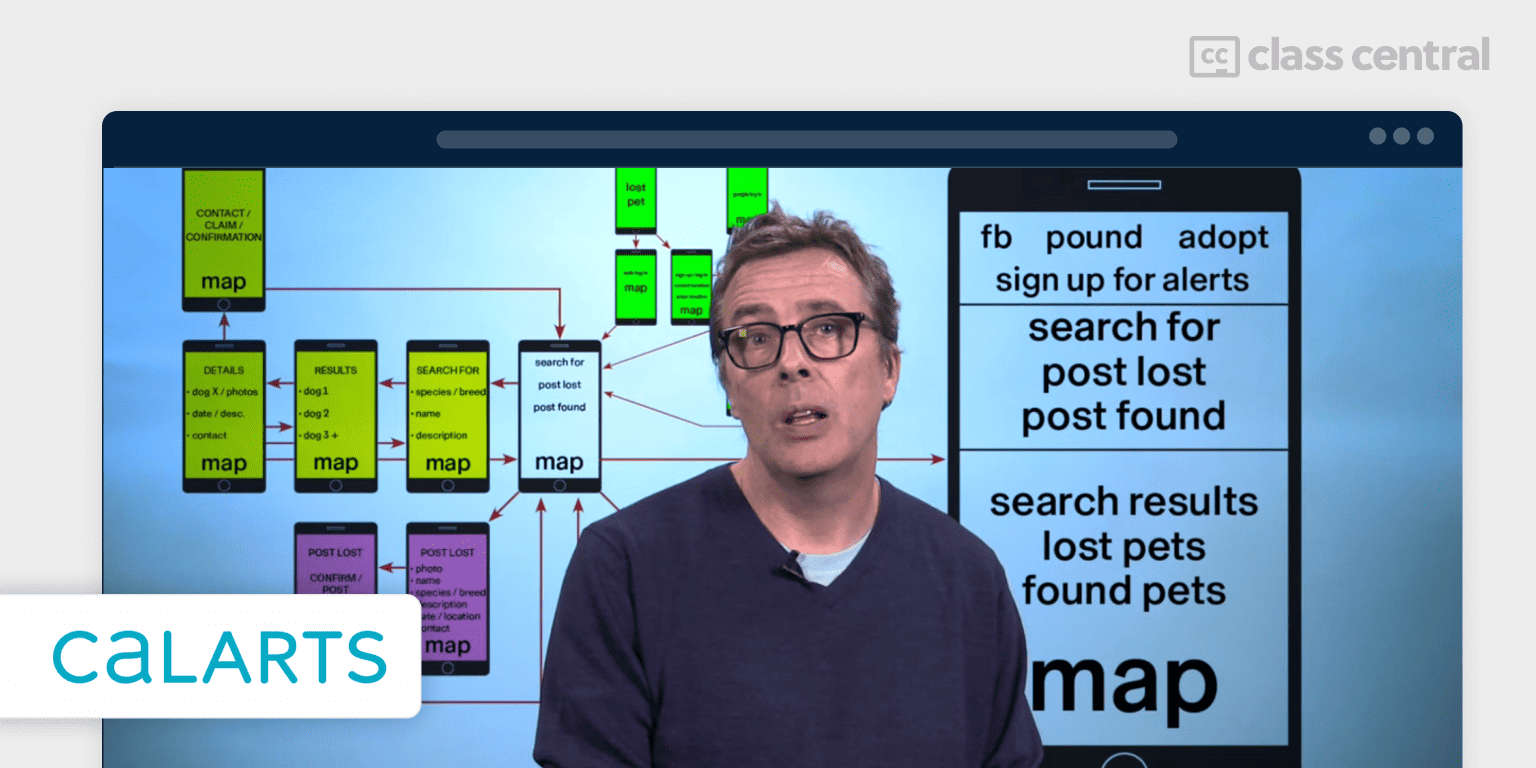
In the UI / UX Design specialization, offered by California Institute of the Arts, you’ll learn all stages of the development process, from user research to wireframes, and apply best practices to create effective screen-based experiences. What’s more – by enrolling into this free-to-audit course, you’ll also be eligible for a one-month free trial of UX tools from Optimal Workshop.
This specialization consists of the following 4 courses:
Visual Elements of User Interface Design
Design clear, consistent and intuitive UI (User Interface) by learning to articulate meaning with color, type and imagery. The course focuses on individual elements and components of an interface designer’s skillset, and offers practical instruction for designing a static screen-based interface.
UX Design Fundamentals
Master the best practices in UX design and understand how UX design shapes audience experience of content, with an emphasis on a design-centric approach to UX/UI design with practical, skill-based instruction.
Web Design: Strategy and Information Architecture
Learn job descriptions within the industry and where UX and UI skills fit in, differences between native apps and websites, distinctions between agile and waterfall approaches, importance of user and site personas in web design, and user testing.
Web Design: Wireframes to Prototypes
Create responsive web design and the challenges of designing for mobile devices, importance of a mobile-first approach, web typography, relationship between design and programming, and different web technologies like HTML, CSS, JavaScript, server-side coding and databases.
| Institution | California Institute of the Arts |
| Provider | Coursera |
| Instructors | Michael Worthington and Roman Jaster |
| Level | Beginner |
| Workload | 85 hours |
| Enrollments | 179K |
| Rating | 4.7 (6.7K) |
| Certificate | Paid |
Also Great UI/UX Design for Beginners (Meta)
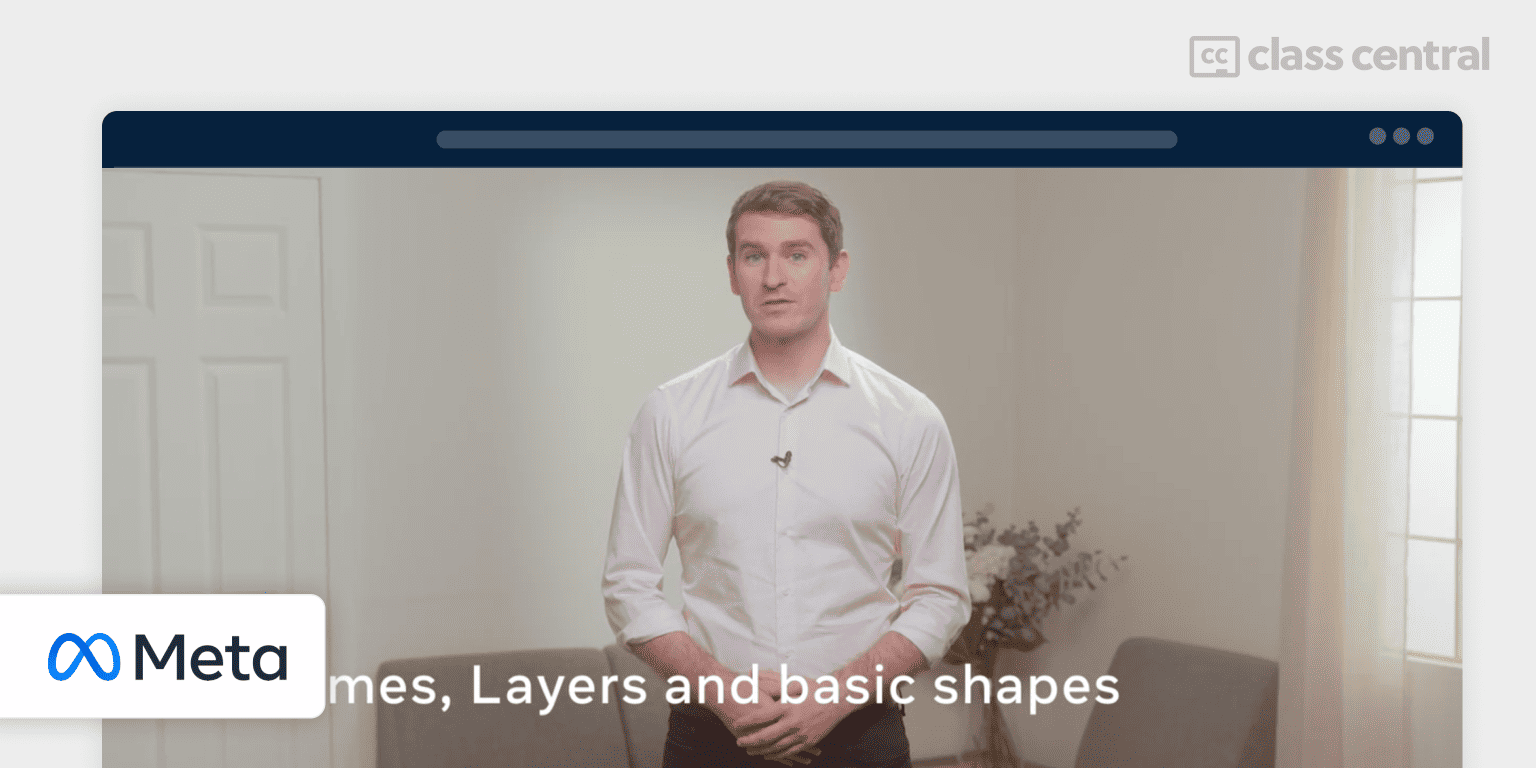
Principles of UI/UX Design teaches you the basics of UX research and design, including how to identify problems, empathize with users, and create user personas. You’ll also learn the UI design process and how to create wireframes and MVP prototypes using Figma, as well as the key design principles.
In this free-to-audit course, you’ll learn:
- The fundamentals of UX and UI design and what constitutes a successful UI
- How to evaluate and improve interactive design using best practices
- Develop your UI design by creating, sharing, and testing it.
Completing this course will count towards your learning in any of the following programs:
- Meta Front-End Developer Professional Certificate
- Meta iOS Developer Professional Certificate
- Meta Android Developer Professional Certificate
- Meta React Native Specialization
| Institution | Meta |
| Provider | Coursera |
| Level | Beginner |
| Workload | 22 hours |
| Enrollments | 78K |
| Rating | 4.7 (650) |
| Certificate | Paid |
Best UX Design and Research Course (University of Michigan)

In the User Experience Research and Design specialization, offered by University of Michigan on Coursera, you will learn how to understand user needs, rapidly generate prototypes, and evaluate design concepts while gaining hands-on experience taking a product from initial concept to user research, ideation, refinement, formal analysis, prototyping, and user testing.
This free-to-audit specialization consists of the following 6 courses:
Introduction to User Experience Principles and Processes
Understand UX research and design skills, including discovering user needs and conducting micro-usability tests. Learn how to use sketching and prototyping to develop design concepts and incorporate a user-centered focus into the design process, and human behavior and techniques for designing interactive systems based on it.
Learn how to conduct qualitative research to understand user needs. Explore semi-structured interviews, in-situ observation, affinity walls, and how to conduct these research methods and gain experience using them.
Navigate various user testing approaches and when to use them, designing effective user tests, running successful user tests, and analyzing and reporting user testing results.
UX Design: From Concept to Prototype
Learn how to define the design problem, create user stories, sketch and brainstorm design ideas, develop wireframes and mockups, conduct user testing, and create prototypes for complex interactions and non-screen-based systems.
UX Research at Scale: Surveys, Analytics, Online Testing
Explore web analytics and A/B testing, remote unmoderated testing, and analyzing large-scale user experience studies. You’ll learn about the different types and uses of surveys in UX research, including developing a survey instrument, analyzing and reporting on surveys, and critiquing user surveys.
Learn how to design and execute a user experience research and design project. You will gain real-world experience by working on a realistic UX design project and learn how to effectively communicate your design concepts and research findings.
| Institution | University of Michigan |
| Provider | Coursera |
| Instructor | Various |
| Level | Beginner |
| Workload | 80 hours |
| Enrollments | 55K |
| Rating | 4.8 (1.7K) |
| Certificate | Paid |
Also Great UX Design and Research Course (HEC Montréal)
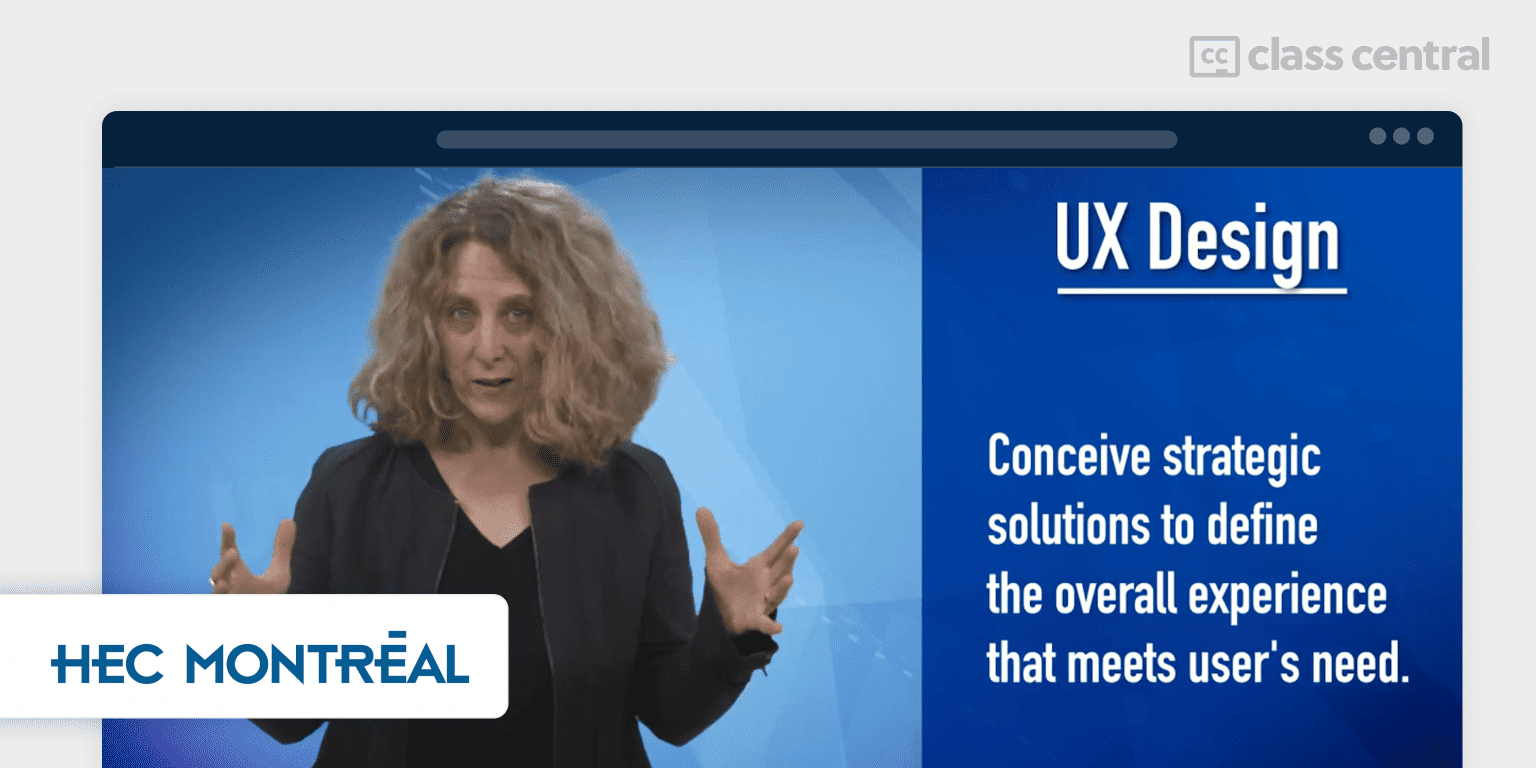
Whether you’re making minor changes or major digital overhauls, UX Design will teach you how to use convergent ideation methods to anchor new concepts within your business context and seek win-win innovation for everyone involved. No prior knowledge is necessary to take this free-to-audit course, offered by HEC Montréal on edX
In this course, you’ll learn:
- The user-centered design approach
- How to integrate UX research into the UX design process
- Explore the concepts of incremental, radical, and disruptive innovation
- How to apply design thinking theory and practice
- Understand divergent and convergent ideation methods, and how to analyze ideation results.
| Institution | HEC Montréal |
| Provider | edX |
| Instructors | Annemarie Lesage and Constantinos K. Coursaris |
| Level | Intermediate |
| Workload | 40 hours |
| Enrollments | 31K |
| Certificate | Paid |
Best Course for Rapid Prototyping (University of California, San Diego)
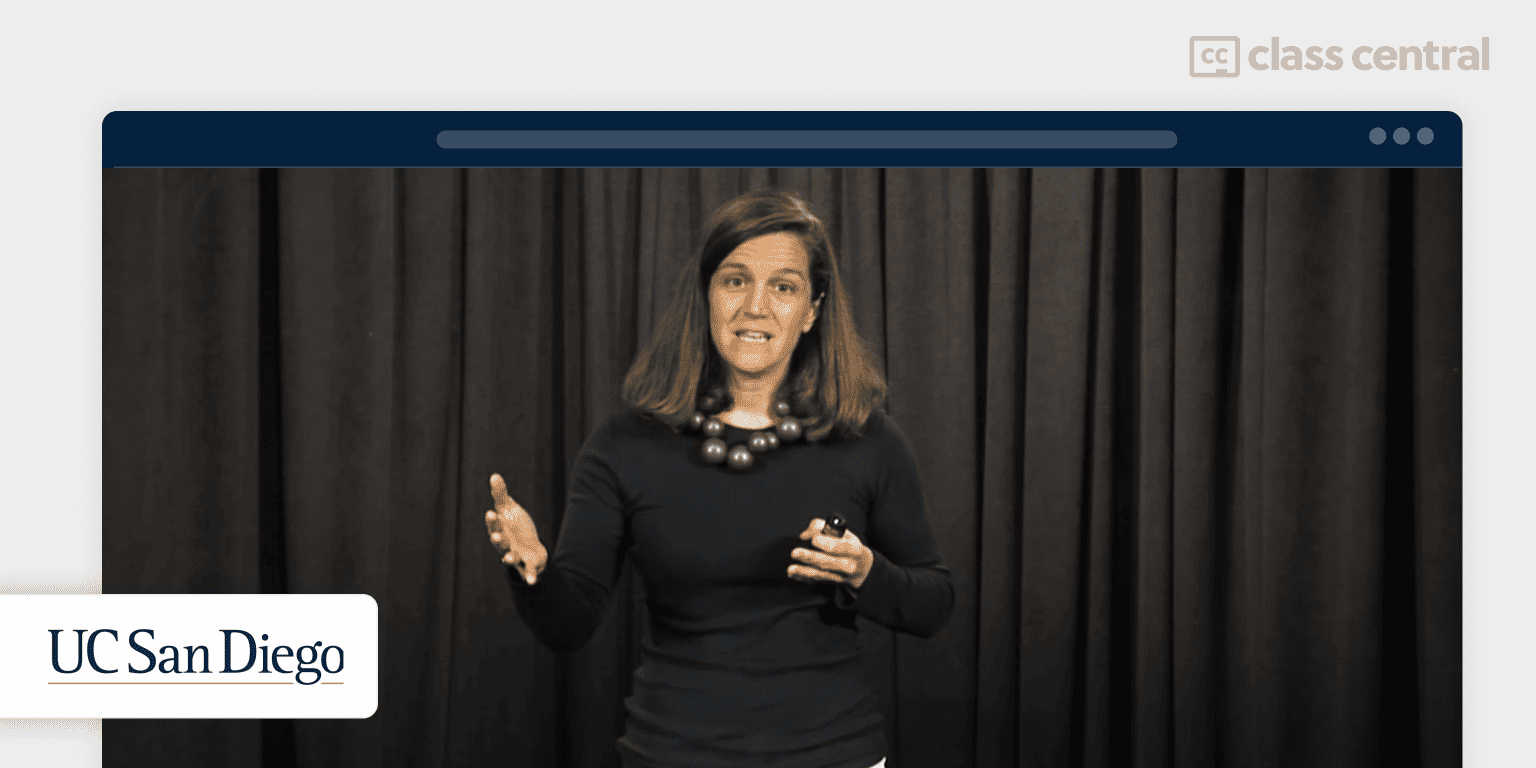
In Interaction Design you’ll learn how to come up with design ideas and rapidly prototype them, using feedback from stakeholders like team members, clients and users. You’ll also explore principles of visual design, perception and cognition that are key to effective interaction design.
This specialization consists of the following 7 free-to-audit courses:
Human-Centered Design: an Introduction
Explore how to design enjoyable technologies and use techniques like rapid prototyping and comparative evaluation. You’ll learn to conduct fieldwork, make interactive paper prototypes and use them to gather feedback.
Design Principles: an Introduction
Learn the fundamental design principles, including visual design, interaction design, and perception and cognition. You will also learn how to evaluate your work with users through controlled online experiments.
Explore the basics of human motor performance, perception, and cognition that inform effective interaction design. You’ll be able to design more effective input and interaction techniques for both traditional graphic and gestural interfaces.
User Experience: Research & Prototyping
Learn the core process of experience design and methods of design research to understand people and their context. You’ll learn to generate and refine ideas to create meaningful actionable insights and opportunities for design in different industries.
Learn visual design principles and concrete strategies for creating effective user interfaces, including typography, information architecture, layout, and color. It addresses specific design issues and how to apply design principles across diverse form factors.
Designing, Running, and Analyzing Experiments
Learn how to design and analyze user-centered experiments to evaluate and validate user experiences. You’ll learn through real-world examples from UX, IxD, and HCI fields, and analyze data using the R programming language.
Interaction Design Capstone Project
Apply the skills learned from the course sequence to redesign a new interface, service, or product for your Interaction Design Capstone Project. You’ll develop real-world design challenges for this final project which can be shared in your design portfolio.
| Institution | University of California, San Diego |
| Provider | Coursera |
| Instructor | Various |
| Level | Intermediate |
| Workload | 120 hours |
| Enrollments | 62K |
| Rating | 4.5/5.0 (3K) |
| Certificate | Paid |
Best UX Design Course for Extended Reality (University of Michigan)
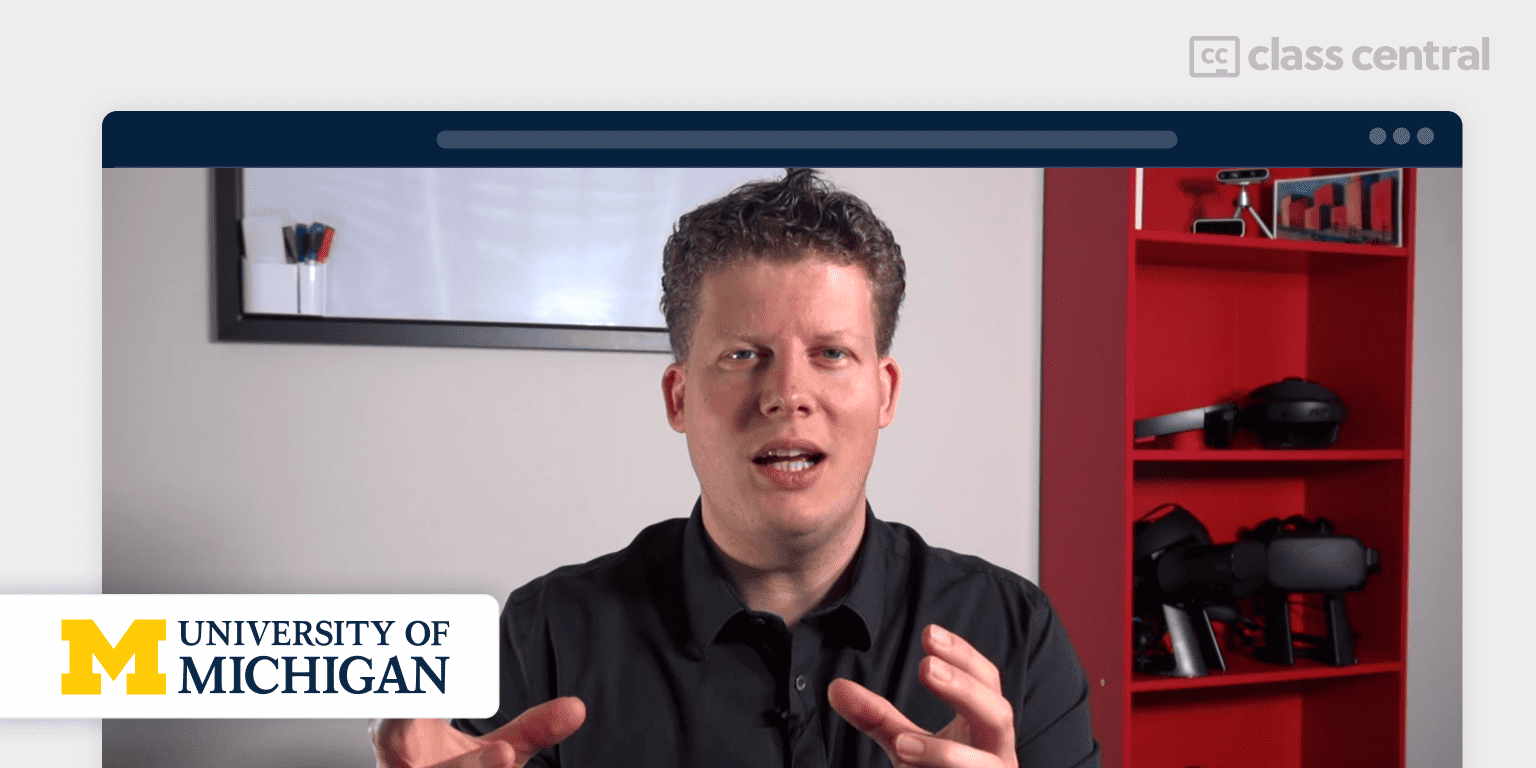
Extended Reality for Everybody covers the basic concepts of XR (Extended Reality), application development and design, emerging key issues in the XR landscape, and bringing XR into instructional settings. Whether you’re a beginner or an expert, this program is open to everyone.
This specialization consists of the following 3 free-to-audit courses:
Intro to AR/VR/MR/XR: Technologies, Applications & Issues
Learn the basics of XR (AR, VR, MR, and XR) and get an overview of the XR landscape, including current and future devices and platforms. Also dive into social and ethical issues, accessibility, and security concerns in XR.
User Experience & Interaction Design for AR/VR/MR/XR
Explore XR design process, design thinking, critiques, ethics, and user-centered techniques like design jams. The course also introduces various physical and digital prototyping methods and tools, including immersive authoring on XR devices.
Developing AR/VR/MR/XR Apps with WebXR, Unity & Unreal
Overview of the XR landscape, design thinking principles, prototyping techniques, and development platforms and tools. You’ll gain a foundational understanding of XR technologies as well as the skills to create and evaluate XR applications.
| Institution | University of Michigan |
| Provider | Coursera |
| Instructor | Michael Nebeling |
| Level | Beginner |
| Workload | 90 hours |
| Enrollments | 8.3K |
| Rating | 4.7/5.0 |
| Certificate | Paid |
Best Course on User Interface Design (University of Minnesota)
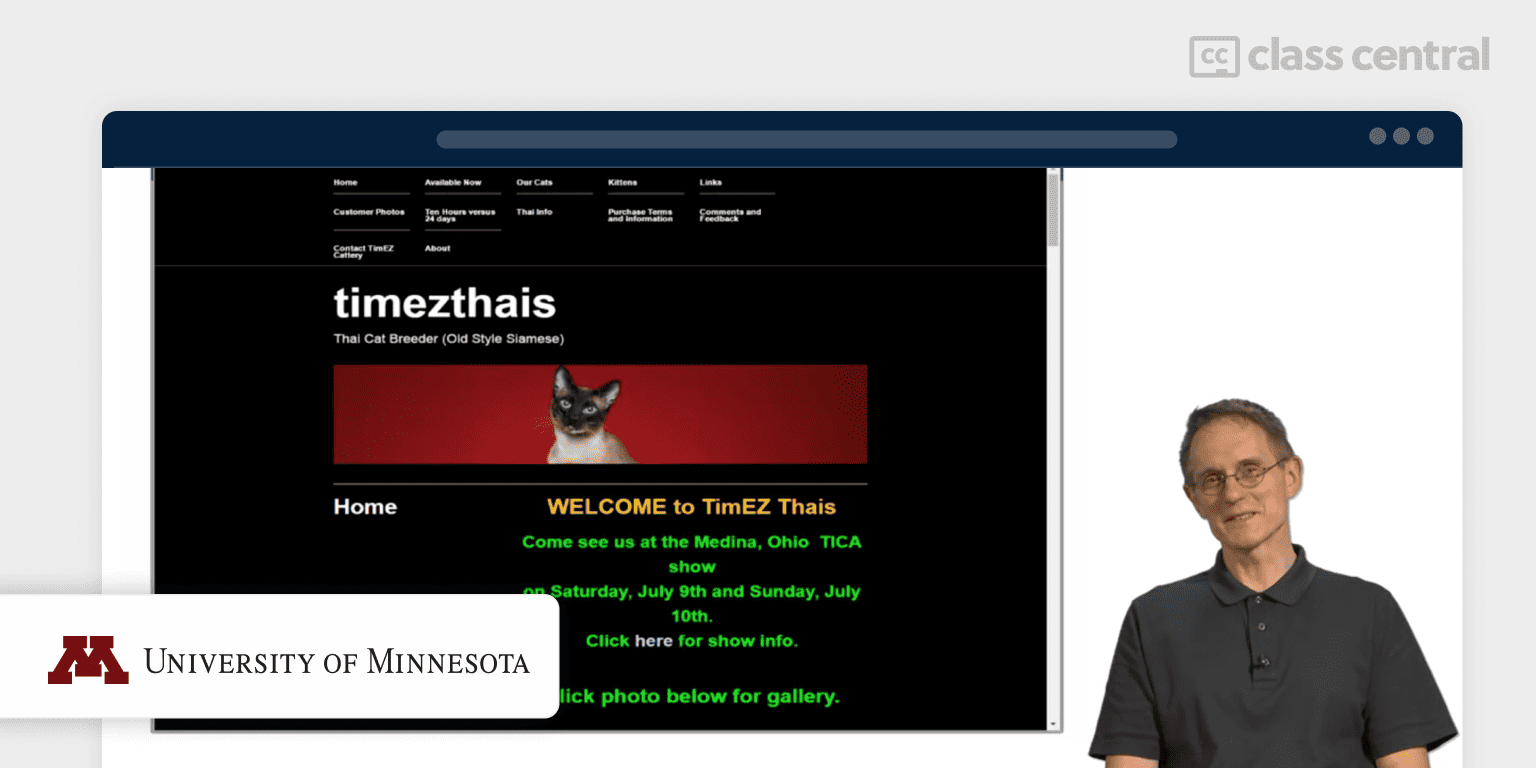
The User Interface Design specialization teaches you how to create successful user interfaces by covering user research, prototyping, and evaluation techniques. You’ll gain experience with structured approaches for understanding user needs, prototyping and design methods, and evaluation techniques to make informed design choices.
This specialization consists of the following 4 free-to-audit courses:
Understand the importance of user interface design and industry-standard methods for designing interfaces. You’ll learn about the design process for improving existing designs and starting new ones. The course also covers core UI design theories and concepts to avoid reinventing the wheel.
Learn user research and UI design exploration techniques. You’ll learn various research methods, analyze and deliver research findings, and practice ideation techniques to generate design ideas.
Practice paper and low-fidelity prototyping techniques, apply graphic design principles and design patterns, write design rationales, and create accessible designs for specific populations and situations through lectures and exercises.
Explore techniques for evaluating user interfaces, including action analysis, heuristic evaluation, and user testing. It covers how to set and measure usability goals and determine when a design is ready for release.
| Institution | University of Minnesota |
| Provider | Coursera |
| Instructor | Various |
| Level | Intermediate |
| Workload | 51 hours |
| Enrollments | 15K |
| Rating | 4.6/5.0 (1.3K) |
| Certificate | Paid |
Best Concise UX Course for Web Design (LinkedIn Learning)
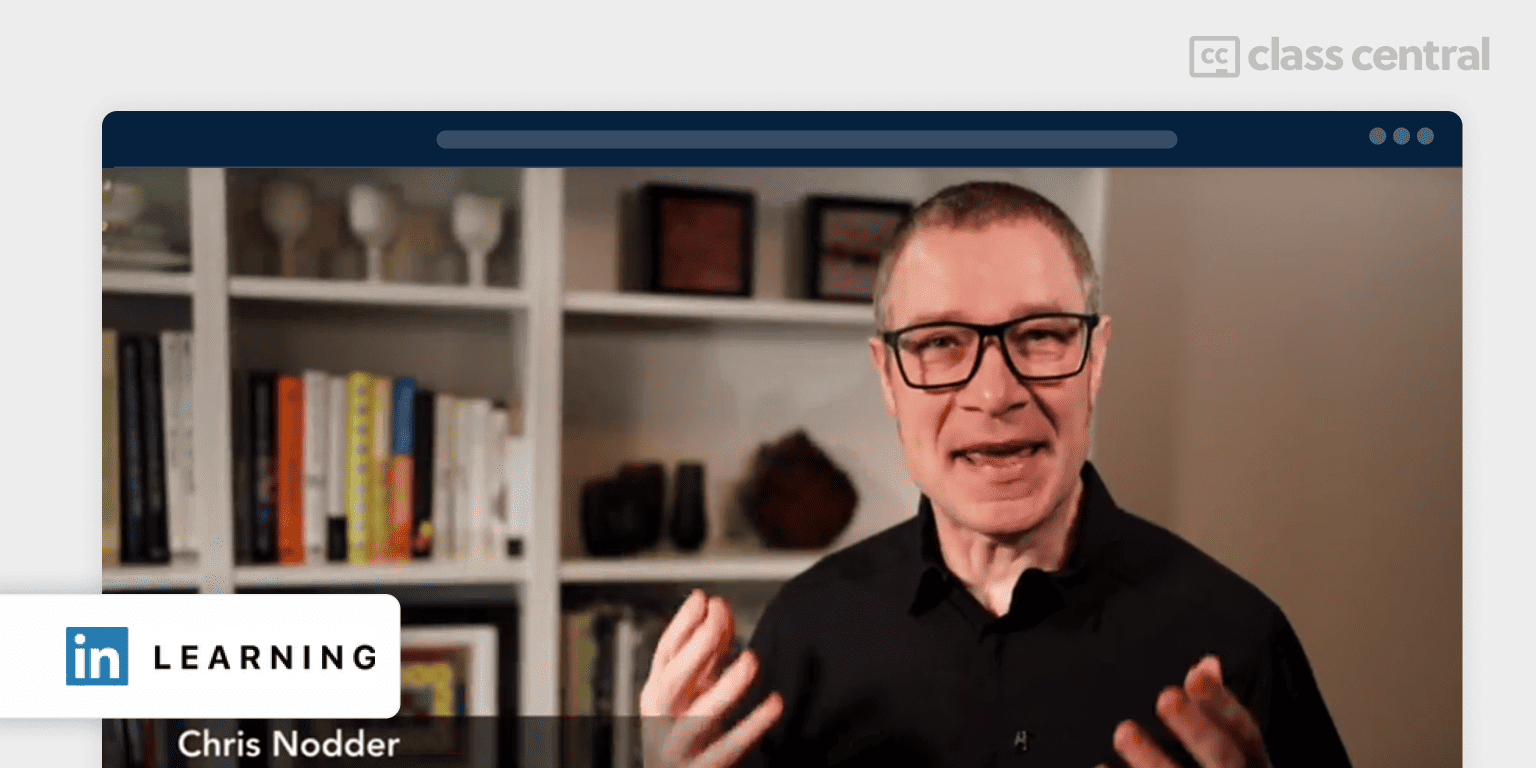
Gain insights into creating interactive content and how to view your site from your users’ perspective to better meet their needs in User Experience for Web Design. This course will teach you how people search for information online, how to structure your content, and how to use graphics and media effectively.
What you will gain:
- Understanding the principles of good web user experience design
- Skills in creating content that enhances user engagement and readability
- Knowledge on effectively using media to complement your website’s message
- Strategies for balancing advertisements with content without compromising user experience
- Insights into designing intuitive navigation and site layout for optimal user flow
- Techniques for crafting compelling homepages, category pages, landing pages, and product detail pages
- Best practices for form design to improve user interaction and data collection.
| Provider | LinkedIn Learning |
| Instructor | Chris Nodder |
| Level | Beginner |
| Workload | 2 hours |
| Enrollments | 28K |
| Rating | 4.8 (1K) |
| Certificate | Paid |
Best UX Design for Mobile Developers (Google)
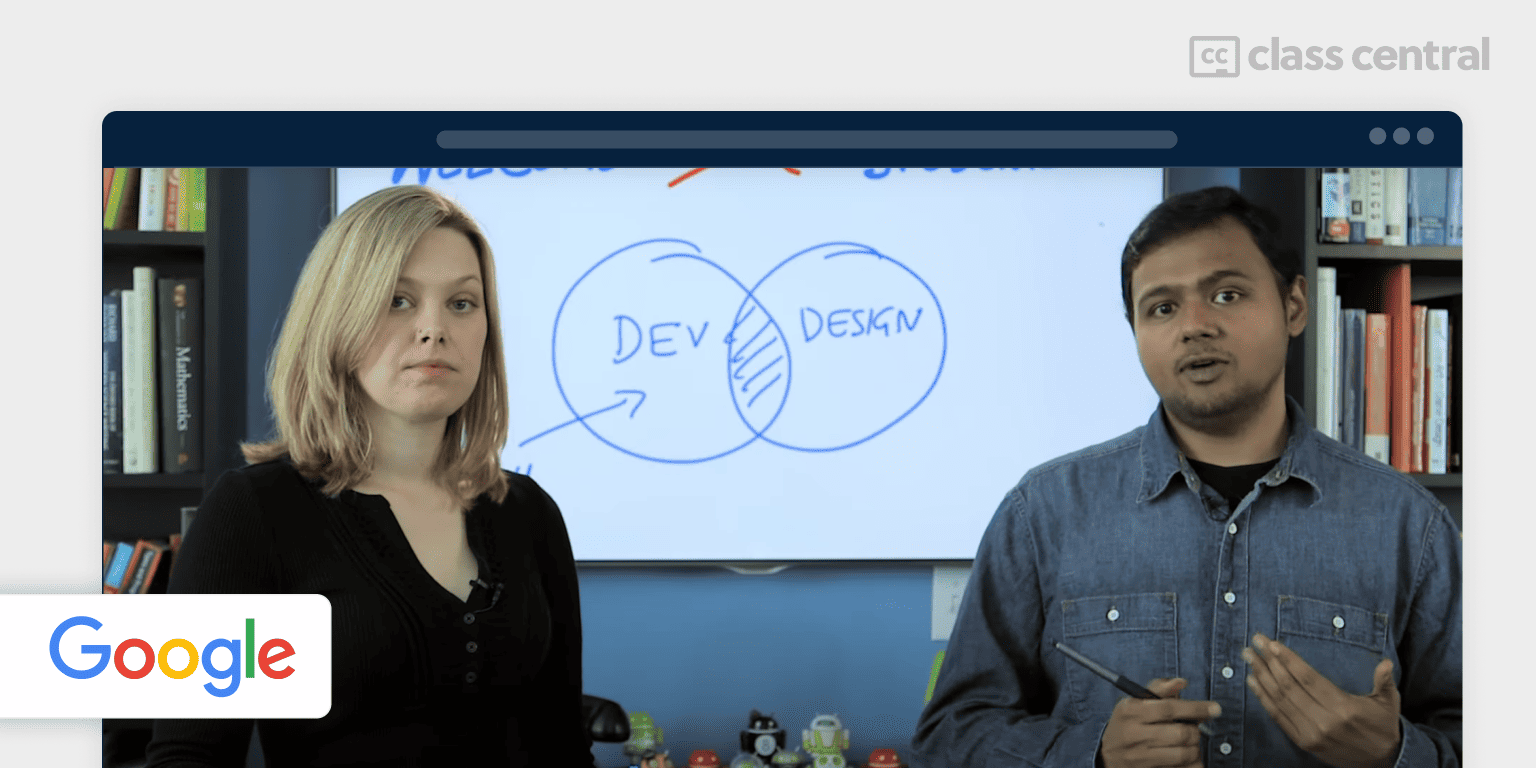
UX Design for Mobile Developers is a good option for developers who want to quickly improve their UX design skills in a mobile/Android context. By focusing on important design techniques, the course aims to teach developers how to plan and prototype effective apps before writing any code.
In this free-to-audit course, you’ll learn:
How UX differs from User Interface (UI),
- The importance of high-level planning and low-fi wireframing and prototyping
- User-Centered Design and how to create effective personas and use cases using low-cost user research
- Designing for mobile constraints, including limited data, finite battery, hand-held usage, divided user attention, and small screens
- Designing for Android, including mobile sensors, contextual apps and APIs such as Google Play Services
| Institution | |
| Provider | Udacity |
| Instructor | Nazmul and Izabel |
| Level | Beginner |
| Class Central Rating | 4.6 (7) |
| Workload | 6 weeks |
| Certificate | Not available |
Why You Should Trust Us
Class Central, a Tripadvisor for online education, has helped 60 million learners find their next course. We’ve been combing through online education for more than a decade to aggregate a catalog of 200,000 online courses and 200,000 reviews written by our users. And we’re online learners ourselves: combined, the Class Central team has completed over 400 online courses, including online degrees.
I (Archisha) am a Guided Project Instructor and a Beta Tester at Coursera, having tested many courses before they’re officially launched. I have taken over 50 online courses in various subjects.
My experience as an online learner and teacher has given me some perspective on what to look for in an online course. I used my experience to evaluate each course in this list.
How We Made Our Picks and Tested Them
Trying to find “the best” can be daunting, even for those of us who live and breathe online courses. Here’s how I approached this task.
First, I combed through Class Central’s Catalog and the internet to find a variety of free and paid open courses, some with certificates. You don’t need to enroll in a university to learn about UX.
When choosing courses, I considered the following factors:
- Renowned Institutions: I looked for recognized institutions in UX
- Instructor experience: I sought instructors with extensive experience and engaging presentation styles
- Popularity: I checked numbers of enrollments and views to find popular courses
- Course content: I examined courses that covered a range of topics and presentation styles, including the basics and more advanced topics. I watched some course videos to sample courses I hadn’t already taken
- Learner reviews: I read learner reviews (when available) to get a sense of the quality of each course, leveraging the Class Central database with its thousands of course ratings and reviews written by our users as well as available course provider reviews.
Then, I defined the scope for these recommendations. A UX course can cover various topics, so I chose top courses from a range of sub-fields.
Ultimately, I used a combination of data and my own judgment to make these picks. I’m confident these recommendations will be a reliable way to learn about UX.
Fabio has revised the research and the latest version of this article.

Archisha Bhar



